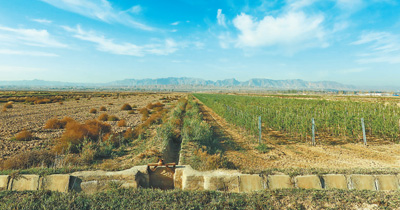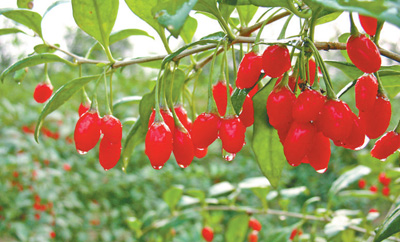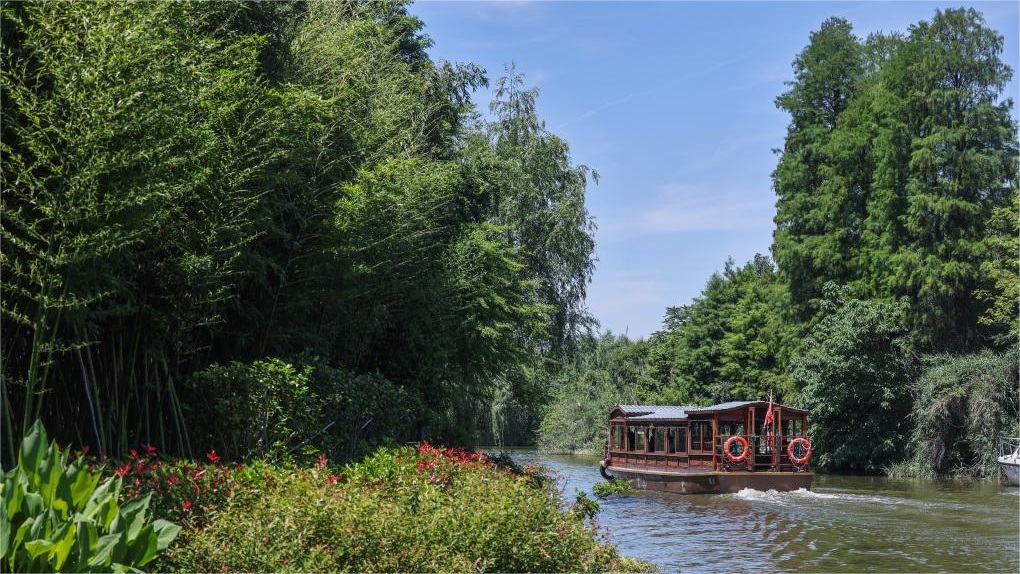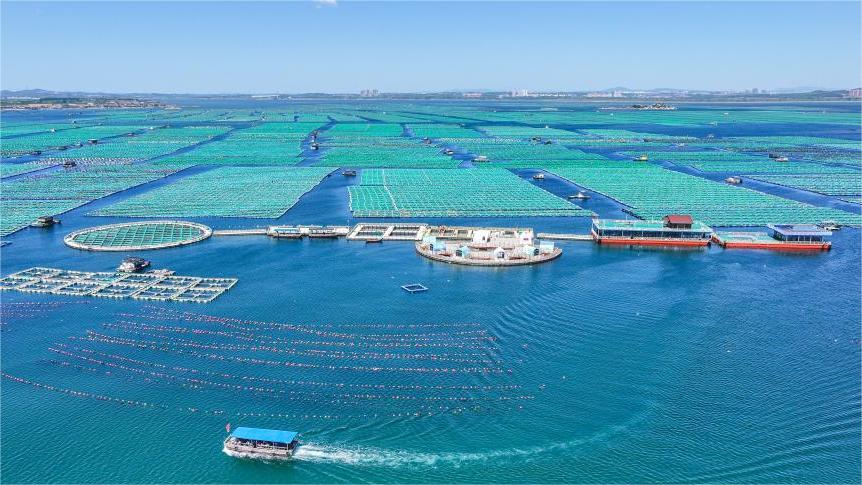County in NW China's Ningxia taps saline-alkali land to develop thriving goji berry industry
Zhongning county in Zhongwei city, northwest China's Ningxia Hui Autonomous Region has planted goji berries on 180,000 mu (12,000 hectares) of land, including nearly 10 percent of moderate to severe saline-alkali land.
Goji berry cultivation has ameliorated nearly 20,000 mu of saline-alkali land in the county. Goji berries, also known as wolfberries, are a specialty in Ningxia.

Photo shows an experimental field for goji berry cultivation on saline-alkali land in Huabaowan village, Dazhanchang township, Zhongning county, northwest China's Ningxia Hui Autonomous Region. (Photo courtesy of the goji research institute of the Ningxia Academy of Agriculture and Forestry Sciences)
Zhongning has adopted standardized cultivation on 78 percent of its goji berry planting area. The county's annual online sales of goji berries and goji products have reached 3.5 billion yuan ($494.1 million), and the comprehensive output value of its goji berry industry has exceeded 13 billion yuan.
Miao Changhe, head of a goji berry cooperative in Huabaowan village, Dazhanchang township, Zhongning county, started growing goji berries on over 8 mu of land in 2007. The village was once plagued by saline-alkali land.
In the summer of 2009, Miao achieved a yield of more than 150 kilograms of dried goji berries per mu, which brought him a decent income of 1,500 yuan per mu.
"Goji berries are saline-alkali tolerant. They can grow well and produce high yields on sierozem soil and saline-alkali land with pH levels of between 8.45 and 9.5," said He Yuehong, a forestry engineer at the service center for the development of the goji berry industry in Zhongning county. He added that planting the crop can also improve saline-alkali land.
For Miao, verdant goji berry plants on the once barren saline-alkali land in Huabaowan village brought not just a bountiful harvest but also renewed hope.
"In 2009, the government started promoting goji cultivation, and provided seedlings and cultivation techniques free of charge," Miao recalled.
Gradually, the soil quality in Huabaowan village has improved steadily. Today, Miao has contracted 90 mu of land to grow goji berries, along with wheat, corn, and barley.
Not far from Huabaowan village lies an experimental field, which is for goji berry cultivation on saline-alkali land, and is owned by the goji research institute of the Ningxia Academy of Agriculture and Forestry Sciences at a planting base of Ningxia Bairuiyuan Goji Berry Co., Ltd.

File photo shows red goji berries in Zhongning county, northwest China's Ningxia Hui Autonomous Region.
According to Wang Xuejun, technical manager of the company's planting base, the team began using locally sourced corn stalks and cattle manure to increase the content of organic matter while reducing salt content in the soil and laying a layer of coarse sand to enhance the air permeability of the soil in March 2021. After that, the team planted goji seedlings and laid drip irrigation pipes to reduce the salt content in the water. The techniques developed by the academy improved the fertility of saline-alkali soil.
The experimental field reaped a good harvest of goji berries in the summer of 2023. The techniques lowered the salt content in the soil of the experimental field to 4.6 per mille last summer from 9 per mille before goji berry cultivation, and cut the pH level from 9.3 to 8.2 and increased the survival rate of goji berry plants to 95 percent from 40 percent. The yield was statistically on par with goji berries grown on normal, non-saline-alkali soil.
Qin Ken, a researcher at the goji research institute of the Ningxia Academy of Agriculture and Forestry Sciences, stressed the importance of selecting saline-alkali tolerant goji berry varieties while ameliorating saline-alkali land.
Due to Zhongning county's unique natural conditions, the goji berries grown here are of top-tier quality and rich in micronutrients, said Liu Juan, deputy director of the service center for the development of the goji berry industry in Zhongning county.
"Only by promoting the comprehensive treatment and utilization of saline-alkali land can we boost the development of our characteristic agriculture," said Yang Jianbo, deputy director of the county's service center for the construction of farmland.
Yang suggested leveraging the county's ecological resources according to local conditions to develop the goji berry sector, a characteristic industry in Ningxia.
The techniques developed by the goji research institute of the Ningxia Academy of Agriculture and Forestry Sciences have been promoted on over 3,000 mu of goji berry fields in Dazhanchang township.
Miao said experts have guided farmers to treat saline-alkali land every year. Last year, the yield of dried goji berries per mu of his fields increased by 50 kilograms, Miao said with a smile.
Photos
Related Stories
Copyright © 2024 People's Daily Online. All Rights Reserved.









